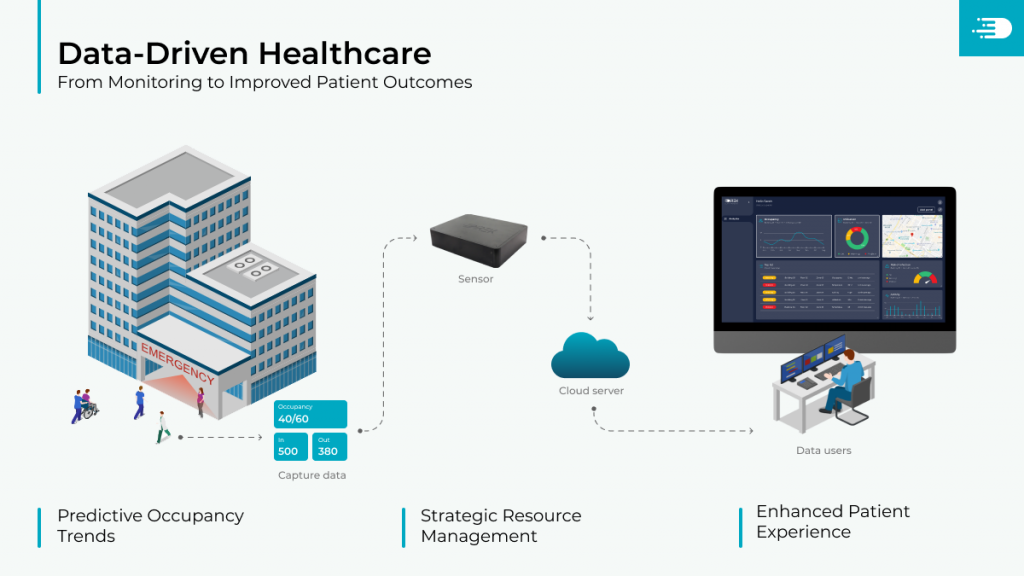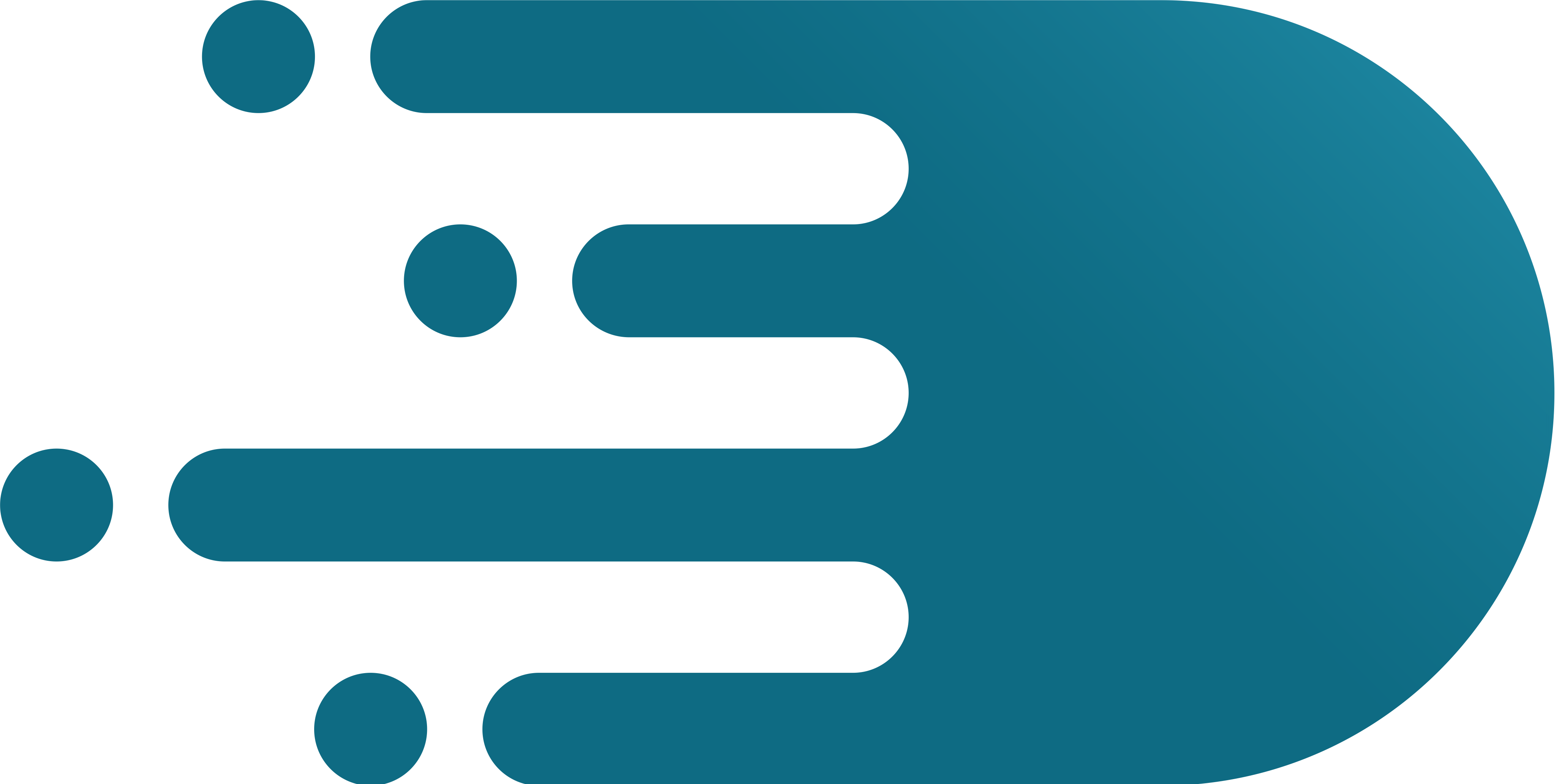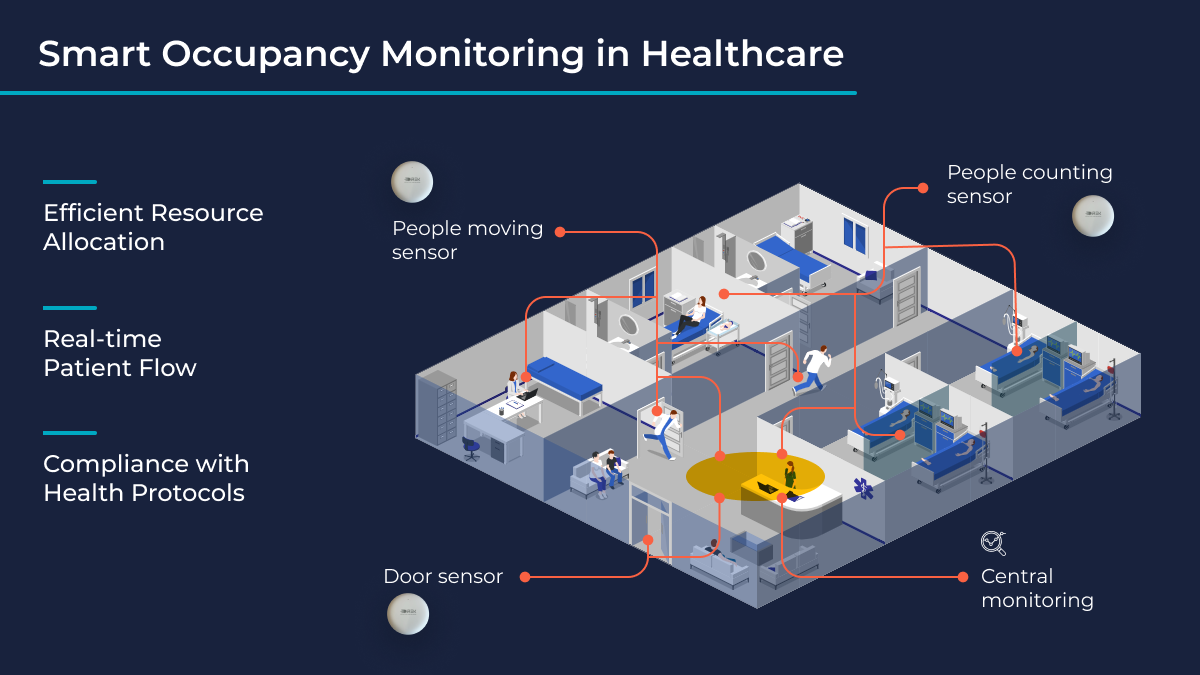As the digital era unfolds, the healthcare industry is experiencing an unprecedented transformation. The Internet of Things (IoT), with its web of interconnected devices and systems, is spearheading this change. Insider Intelligence Magazine underscores this evolution, predicting the market’s expansion to $187.60 billion by 2028. IoT’s integration into healthcare, known as the Internet of Medical Things (IoMT), signals a paradigm shift from traditional practices to a new, efficiency-driven approach using smart building technologies.
The Role of IoT in Transforming Healthcare Facilities
The integration of IoT within healthcare ecosystems is swiftly transitioning from a luxury to a necessity. Among its multifaceted applications, smart occupancy sensors stand out as a potent tool for improving facility management and patient care. IoT devices, including CO2 monitors and air quality sensors, help healthcare facilities:
- Efficiently manage space and patient flow, reducing wait times and preventing overcrowding, thanks to advanced space management techniques.
- Enhance resource allocation, allowing for improved staffing and equipment utilisation with the aid of smart sensors.
- Support environmental monitoring in patient areas to help maintain optimal conditions for recovery and well-being, utilising sensors for volatile organic compounds (VOCs) and carbon dioxide levels.
- Increase the overall quality of patient care by facilitating timely intervention and reducing infection risks through better space utilisation and indoor air quality monitoring.
Benefits of Smart Occupancy Monitoring Systems in Healthcare
Occupancy monitoring systems, when integrated into the broader IoMT framework, offer several transformative benefits for healthcare facilities:
- Operational Insight: Facilities gain deeper insights into patient and staff distribution, which can inform quicker, more effective responses to patient needs, supported by smart building solutions.
- Resource Efficiency: By aligning workforce scheduling with patient occupancy trends using occupancy sensors, operational efficiency is markedly improved.
- Regulatory Compliance: These systems aid in maintaining appropriate occupancy levels, helping institutions adhere to health and safety standards.
- Cost Management: Strategic deployment and space utilisation can lead to significant cost savings for healthcare providers, driven by energy monitoring systems.
The Precision Advantage with DIREK’s Smart Occupancy Monitoring

As healthcare facilities embrace IoT, DIREK’s smart occupancy monitoring systems provide a precision-oriented solution tailored to the unique demands of the healthcare environment:
- Customised Applications: DIREK’S indoor radar technology is engineered with the specific needs of healthcare settings in mind, ensuring an optimal balance between operational demands and patient care.
- Strategic Data Utilisation: DIREK’s technology goes beyond simple occupancy counting; it involves the utilisation of AI-powered analytics to process real-time data, granting facility managers the insights needed to make informed, proactive decisions.
- Supporting Patient Care: By analysing occupancy trends, DIREK aids in optimising the distribution of patients and staff, facilitating a patient-centric approach to care.
- Data-Driven Management: Accurate and detailed occupancy data is a foundation for strategic planning, resource management, and facility design.
DIREK’s smart occupancy monitoring solutions, as part of a comprehensive IoMT strategy, enable healthcare providers to forge a path to enhanced operational efficiency, improved patient experiences, and a commitment to the highest standards of care.
Reference:
Insider Intelligence, (2023). “IoT Healthcare in 2023: Companies, medical devices, and use cases”.

